TensCare SURE+ Manuel utilisateur
- Catégorie
- Mesure, test
- Taper
- Manuel utilisateur

0
INSTRUCTIONS FOR USE
READ CAREFULLY BEFORE USE

1
QUICKSTART GUIDE - PELVIC FLOOR EXERCISER
Connect the unit with the vaginal probe
Conecte la sonda vaginal a la unidad
Connectez l’appareil à la sonde vaginale
Verbinden Sie das Gerät mit der Vaginalsonde
Insert the vaginal probe
Introduzca la sonda vaginal
Insérez la sonde vaginale
Führen Sie die Vaginalsonde ein
Press and hold the ON button to switch the device on
Presionar el botón de ON para encender el dispositivo
Appuyez sur le bouton ON pour allumer l’appareil
Halten Sie die ON-Taste gedrückt, um einzuschalten
Regulate the output intensity with ▲ and ▼
Regule la intensidad con los botones ▲ y ▼
Choisissez l’intensité avec ▲ et ▼
Regulieren Sie die Intensität mit ▲ und ▼
Press and hold the OFF button to switch the device off
Presionar el botón de OFF para apagar el dispositivo
Appuyez sur le bouton OFF pour éteindre l’appareil
Halten Sie die OFF-Taste gedrückt, um auszuschalten
ON
Button P
UP
DOWN
OFF
Select the programme by pressing the button P
Seleccione el programa presionando el botón P
Choisissez le programme avec le bouton P
Wählen Sie ein Programm mit der P-Taste
1
2
3
4
5
6

2
QUICKSTART GUIDE – PERIOD PAIN RELIEVER P
Connect the unit with the electrode pads
Conecte el dispositivo a los parches
Connectez l’appareil aux électrodes
Verbinden Sie das Gerät mit den Elektroden
Place the electrodes as indicated in section 15
Coloque los electrodos como se indica en la sección 15
Placez les électrodes, voir section 15
Platzieren Sie die Elektroden wie in Abschnitt 15 beschrieben
Press and hold the ON button to switch the device on
Presionar el botón de ON para encender el dispositivo
Appuyez sur le bouton ON pour allumer l’appareil
Halten Sie die ON-Taste gedrückt, um einzuschalten
Regulate the output intensity with ▲ and ▼
Regule la intensidad con los botones ▲ y ▼
Choisissez l’intensité avec ▲ et ▼
Regulieren Sie die Intensität mit ▲ und ▼
Press and hold the OFF button to switch the device off
Presionar el botón de OFF para apagar el dispositivo
Appuyez sur le bouton OFF pour éteindre l’appareil
Halten Sie die OFF-Taste gedrückt, um auszuschalten
ON
Button P
UP
DOWN
OFF
Select the PAIN programme by pressing the button P
Seleccione el programa PAIN presionando el botón P
Choisissez le programme PAIN avec le bouton P
Wählen Sie das PAIN-Programm mit der P-Taste
1
2
3
4
5
6

3
Dear Customer,
Thank you for choosing Sure+. TensCare stands for high-quality,
thoroughly tested products for the applications in the areas of gentle
electrotherapy, muscle toning, continence management and pain relief
during labour.
Please read these instructions for use carefully and keep them for later
use and observe the information they contain.
Best regards,
Your TensCare Team

4
Contents
1. INTRODUCTION ................................................................................................. 6
2. INTENDED USE .................................................................................................. 6
3. SURE+ FEATURES............................................................................................. 7
4. PELVIC FLOOR EXERCISES ............................................................................. 7
4.1. PELVIC FLOOR MUSCLES .......................................................................... 7
4.2. PERFORMING PELVIC FLOOR EXERCISES ............................................. 9
5. TYPES OF INCONTINENCE ............................................................................. 10
6. PERIOD PAIN.................................................................................................... 10
7. HOW ‘EMS’ WORKS ......................................................................................... 11
8. HOW ‘TENS’ WORKS ....................................................................................... 12
9. CONTRAINDICATIONS, WARNINGS & CAUTIONS ........................................ 13
10. INFORMATION ABOUT THE PROGRAMME SETTINGS ............................. 16
11. PROGRAMMES ............................................................................................. 17
11.1. PROGRAMME SETTINGS ...................................................................... 17
11.2. PRESET PROGRAMMES ....................................................................... 17
12. CONTENT ...................................................................................................... 18
13. UNIT INFORMATION ..................................................................................... 19
13.1. CONTROLS & DISPLAY ......................................................................... 19
13.2. OPERATING INSTRUCTIONS ................................................................ 20
14. SETTING UP AND USING THE SURE+ ........................................................ 22
14.1. INSTALLATION OF BATTERIES ............................................................. 22
14.2. CONNECTING LEAD WIRE .................................................................... 23
14.3. PREPARING FOR SESSION .................................................................. 23
14.4. TRAINING SESSION ............................................................................... 24
14.5. AFTER YOUR TRAINING SESSION ....................................................... 26
15. PAIN PROGRAMME ...................................................................................... 26
16. CLEANING ..................................................................................................... 27
17. EMC ............................................................................................................... 27
18. DISPOSAL OF WASTE ELECTRICAL AND ELECTRONIC PRODUCTS
(WEEE) .................................................................................................................... 27
19. ACCESSORIES ............................................................................................. 28
20. WARRANTY ................................................................................................... 29
21. TROUBLESHOOTING ................................................................................... 30
22. GENERAL SPECIFICATION .......................................................................... 32

5
SYMBOLS USED
Attention! Please follow the instructions in the user’s instructions for use.
TYPE BF EQUIPMENT: Equipment providing a degree of protection against
electric shock, with isolated applied part. Indicates that this device has conductive
contact with the end user.
This symbol on the unit means “Refer to instructions for use”.
Temperature Limitation: indicates the temperature limits to which the medical
device can be safely exposed.
Lot Number: indicates the manufacturer’s batch code so that the batch or lot can
be identified.
Humidity Limitation: indicates the humidity limits to which the medical device can
be safely exposed.
Serial Number: indicates the manufacturer’s serial number so that a specific
medical device can be identified.
Do not dispose in household waste.
Catalogue Number: indicates the manufacturer’s catalogue number so that the
device can be identified.
Atmospheric Pressure: indicates the atmospheric limits to which the medical device
can be safely exposed.
Date of Manufacture: indicates the date which the medical device was
manufactured. This is included within the serial number found on the device
(usually in the battery compartment), either as “E/Year/Number” (YY/123456) or
“E/Month/Year/Number” (MM/YY/123456).
This medical device is indicated for home use.
This medical device is not water resistant and should be protected from liquids.
The first number 2: Protected against access to hazardous parts with a finger,
and the jointed test finger of 12 mm ø, 80 mm length, shall have adequate
clearance from hazardous parts, and protected against solid foreign objects of 12.5
mm ø and greater.
The second number 2: Protected against vertically falling water drops when
enclosure is tilted up to 15˚. Vertically falling drops shall have no harmful effects
when the enclosure is tilted at any angle up to 15˚ on either side of the vertical.
LOT
S/N
REF
IP22

6
1. INTRODUCTION
Device Description & Principles of
Design
Bladder leakage and incontinence are
common problems for both women and
men, affecting their long-term health.
Exercising the pelvic floor muscles is
recognised as the way of preventing
and treating symptoms of incontinence
and pelvic floor weakness.
The Sure+ is a powered muscle
stimulator used for strengthening the
pelvic floor muscles.
It sends a gentle stimulation (similar to
your natural nerve impulses) direct to
your pelvic floor muscles through a
vaginal probe with stainless steel
electrodes. These signals make your
pelvic floor muscles contract. If you
have forgotten how to contract them,
are having trouble getting muscle
response, or simply want to bring back
the condition of your pelvic floor
muscles, the Sure+ can work them for
you to build up their strength and help
you to develop your own muscle
control. It perfectly complements pelvic
floor exercises.
Additionally, the Sure+ offers drug-free
relief from period pain.
Period Pain (Dysmenorrhoea) is a
widespread problem which affects 40-
90% of women. Period pain can have a
real impact on quality of life, leading to
absences from work and school.
If you are unsure of the cause of the
pain, then you should seek medical
advice to establish the cause and
identify the correct treatment.
The Sure+ provides relief from
conditions such as:
• Urinary and faecal incontinence:
including stress, urge and mixed
types as well as post prostatectomy
urinary incontinence in men.
Additionally, it may help improve
sexual intimacy by toning the pelvic
floor muscles.
• Period pain: primary menstrual pain
(dysmenorrhoea) and secondary
menstrual pain due to conditions
such as endometriosis, fibroids or
pelvic inflammatory disease.
2. INTENDED USE
Sure+ is a medical device
designed to be used in the
home healthcare environment
to treat symptoms of urinary and/or
faecal incontinence as well as
symptoms of primary menstrual pain
(dysmenorrhoea); and is suitable for
use by all who can control the device
and understand the instructions.
The Sure+ may also help to relieve the
pain of secondary menstrual pain due
to conditions such as endometriosis,
fibroids or pelvic inflammatory disease.
Do not use the device for any purpose
other than this intended use.
Warning: Not suitable for use
in children without medical
supervision.

7
3. SURE+ FEATURES
• Single Channel
Single channel unit to treat symptoms
of urinary incontinence via a probe with
biofeedback pointer.
• Comfortable Stimulation
Gentle stimulation with fine tune
adjustment settings for different levels
of intensity, 1 mA per step.
• 5 Preset Programmes
EMS programmes including STRES,
URGE, MIXED and TONE aftercare;
and additional TENS programme
providing relief from period pain.
• Memory
Features 3 functions: programme
retention (automatically starts in the last
programme used), number of uses and
time of usage.
• Treatment Timer
Unit defaults to 20 minutes’ treatment to
ensure the pelvic floor muscles are not
over-worked. The user can manually
reset this (Continuous, 10, 20, 30, 45,
60 or 90 mins).
• Open Circuit Detection
Automatically resets the strength to
zero and flashes ‘LEADS’ if the
connection comes loose.
• Automatic Keypad Lock
Automatic keypad lock prevents any
accidental changes in settings.
• Large LCD Screen
Clearly shows the operation of the unit
and the programme and intensity being
used.
4. PELVIC FLOOR
EXERCISES
4.1. PELVIC FLOOR
MUSCLES
The “FLOOR” of your pelvis is made up
of layers of muscles that support the
bowel, bladder, urethra and uterus.
These muscles are like a hammock, or
the bottom and sides of a bowl, in
shape. They run from the pubic bone in
the front to the end of the spinal column
(or tail bone) in the back.
The pelvic floor muscles:
• Assist in supporting the abdominal
and pelvic organs.
• Work with the abdominal and back
muscles to stabilise and support the
spine.
• In women, also
o provide support for the baby
during pregnancy and
o assist in the birthing process
Pelvic floor muscles are also important
for sexual function in both men and
women:
• In men, it is important for erectile
function and ejaculation.

8
• In women, voluntary contractions
(squeezing) of the pelvic floor
contribute to sexual sensation and
arousal.
However pelvic floor muscles may
become weak. If your pelvic floor
muscles become stretched or
weakened, your pelvic organs may no
longer be fully supported and you may
lose control of your bladder or bowel
movements.
For some women, the pelvic floor
muscles can also become too tight.
This condition is less common, but it
can lead to pelvic pain and make it
difficult for you to empty your bladder or
bowel completely.
Common signs that can indicate a
pelvic floor problem include:
• Accidentally leaking urine when you
exercise, laugh, cough or sneeze
• Needing to get to the toilet in a hurry
or not making it there in time
• Constantly needing to go to the toilet
• Finding it difficult to empty the
bladder or bowel
• Accidentally losing control of the
bladder or bowel
• Accidentally passing wind
• Pain in your pelvic area
• Painful sex, or
• A prolapse
In women, this may be felt as a bulge in
the vagina or a feeling of heaviness,
discomfort, pulling, dragging or
dropping. This occurs when one or
more of the pelvic organs (bladder,
bowel or uterus) become displaced and
sag down into the vagina. It is very
common in the United Kingdom and
occurs in about 40% of women.
Symptoms tend to become
exacerbated towards the end of each
day and if left untreated, they will
generally worsen over time.
In men, this may be felt as a bulge in
the rectum or a feeling of needing to
use the bowel but not actually needing
to go.
Like other muscles in your body, the
pelvic floor can be strengthened with
regular exercise. Building pelvic floor
strength enables the muscles to better
support your pelvic organs, improves
your bladder and bowel control and can
stop accidental urine, faeces or wind
leakage.
It can also reduce your risk of prolapse,
improve your recovery from childbirth
and gynaecological surgery, and
increase your sexual pleasure. A
continence therapist can help you learn
how to exercise your pelvic floor.
Doing just a few pelvic floor exercises
every day will help to treat bladder
weakness or prolapse symptoms, and
will help to prevent problems later on.

9
4.2. PERFORMING PELVIC
FLOOR EXERCISES
It is recommended to make Pelvic Floor
Exercises (sometimes called Kegel
Exercises) part of your daily life.
1) Kegel exercises can be done at any
time and are very discreet so you can
do them almost anywhere; lying in
bed, sitting at the computer or
waiting for a bus. It is a good idea to
try and develop a routine which you
can repeat each day.
2) First, it is important to find your pelvic
floor muscles and feel them working.
So here are a couple of techniques
which might help:
Try inserting one or two clean fingers
into your vagina and then squeezing
the surrounding muscles, lifting up
and towards your belly button – a
squeezing and lifting sensation.
Another way is to try and stop the
flow of urine during urination. If you
are successful, then you know you
are exercising the correct muscles.
Note: These techniques are
just to help you confirm that you
are using the correct muscles. It is
important to have an empty bladder
before starting the exercises.
3) Try to remember the lifting and
squeezing sensation and when you
are ready try to recreate it just using
the muscles you identified earlier;
don't tense the muscles in your legs,
stomach or buttocks and remember
to breathe normally.
4) Aim to hold each squeeze or
'contraction' for three to five
seconds, then release and relax.
You should feel a ‘letting go’ of the
muscles. Rest for five seconds and
then repeat.
5) Try and do about ten squeezes in
this way.
6) Repeat the whole process three or
four times a day.
7) Over a period of time try to increase
the muscle contractions up to about
ten seconds, but remember to rest in
between each squeeze for longer
periods.
Note: It is important to aim for
quality contractions, not
quantity, so a few good hard squeezes
are better than a series of weak ones.
Do not worry if you find holding for 3
seconds difficult at first. Just
squeeze for as long as you feel
comfortable to do so. The more
exercise you do, the stronger the
muscles will become and the longer
you will be able to squeeze.
8) Using your Sure+ pelvic floor
stimulator in conjunction with Kegel
exercises will give you a better
understanding of how they work and
how to get the greatest benefit from
them.
Use the pointer as an indication of how
well you are performing the Kegel
exercises.
• When performed
correctly, the pointer
will move
downwards.
• When performed
incorrectly, the
pointer will move
upwards.

10
5. TYPES OF
INCONTINENCE
There are three types of incontinence:
Stress, Urge, and Mixed.
Stress Incontinence
If you leak urine when you cough,
sneeze, laugh, strain or make sudden
movements, this is called Stress
Incontinence.
It is particularly common in women who
have had a natural childbirth and occurs
when the bladder neck and the other
mechanisms that act to hold urine in the
bladder are not working properly. The
most common cause is a weak pelvic
floor.
Urge Incontinence
Describes an overactive bladder. A
person may experience a strong and
sudden urge to go to the toilet but are
not always able to hold on, or must go
so frequently that it becomes
inconvenient.
Mixed Incontinence
Is a combination of both Stress and
Urge Incontinence.
6. PERIOD PAIN
Painful periods are common in
teenagers and young adults.
Most women have some pain during
periods. The pain is often mild but, in
about 5 in 10 women, the pain is severe
enough to affect day-to-day activities.
The pain can be so severe that they are
unable to go to school or work.
Period pain generally falls into two
categories: primary dysmenorrhea
and secondary dysmenorrhea.
Primary dysmenorrhoea has no
specific cause yet is the most common
type of painful periods affecting 9 out of
10 women. It occurs where there is no
underlying problem of the womb
(uterus) or pelvis. The main symptom is
a cramping type of pain in the lower
tummy (abdomen); it may in some
cases spread to the lower back, or to
the top of the legs. Pains are generally
worst in the first few years after starting
your period, with symptoms tending to
improve with age or after childbirth.
Secondary dysmenorrhoea is less
common and is more likely to occur in
women in their 30s and 40s. It is caused
by a specific underlying condition such
as endometriosis (when cells that
normally line the uterus are found at
other sites in the body – usually the
ovaries and fallopian tubes). Again, the
main symptom is cramping pain in the
lower tummy during your periods. In
some women with secondary
dysmenorrhoea the pain starts several
days before the period begins and lasts
all the way through the period. (This is
uncommon with primary
dysmenorrhoea).
With secondary dysmenorrhoea it is
likely to have other symptoms - for
example:
• Irregular periods.
• Bleeding between periods.
• Pains between periods.

11
• The bleeding becomes heavier than
previously.
• Vaginal discharge.
• Pain during sex.
• Pain in your back passage (rectum).
Secondary dysmenorrhoea may occur
as a result of:
• Endometriosis/adenomyosis.
• Pelvic inflammatory disease.
• Fibroids when it is often associated
with heavy menstrual bleeding.
• Adhesions.
• Developmental abnormalities.
Consult your healthcare professional if
you are experiencing any of the above
symptoms.
7. HOW ‘EMS’ WORKS
E.M.S. stands for Electrical Muscle
Stimulation and has successfully been
used in medical rehabilitation and
training in competitive sports. EMS
produces intensive and effective
muscular contraction.
In rehabilitation, EMS is a well-
established method for treatment of a
broad field of musculoskeletal
diagnoses as well as pelvic floor
weakness. Electrical stimulation of an
intact peripheral nervous system may
create motor responses in patients with
impaired or lost ability for voluntary
muscle activity.
EMS is a complement to other physical
therapy and should always be
combined with active training such as
Kegel exercises (see section 4.2.).
Advantages of EMS
Use of EMS may lead to faster progress
in the patient’s treatment programme.
The method is simple and appropriate
for treatment in the clinical setting as
well as for self-treatment at home.
How EMS Works
Electrical Muscle Stimulators can play a
vital role in educating women and men
about their pelvic floor and the
sensation they should feel when doing
pelvic floor exercises. Electrical Pelvic
Floor Exercisers (PFE) offer a non-
invasive method of producing
contraction of muscles via a gentle
stimulation to the pelvic floor through a
discreet probe or electrode pads when
they are placed close to the nerve that
controls the pelvic floor muscles. This
current then passes into the nerve
fibres controlling that part of the muscle
stimulating it to contract. So, electrical
stimulation (EMS) artificially activates a
muscle for you enabling you to develop
your own muscle control. These
contractions exercise the muscles and,
as with any kind of exercise if
performed regularly, build strength and
tone.
In urge incontinence, pelvic floor
exercisers work in a slightly different
way. The electrical stimulation is
designed to soothe your bladder
muscles rather than exercise your
pelvic floor. Sure+ uses a gentler, low
frequency setting which promotes
release of endorphins and reduces
involuntary contractions of the bladder
(detrusor) muscle.
Different frequencies have different
effects; low frequencies (1-10 Hz)
coupled with long impulse times, for

12
example, have a purifying and relaxing
effect through individual contractions,
whereby the circulation in the treated
muscle is simultaneously improved and
removal of metabolic end products is
supported (lymphatic drainage).
In contrast, by means of a rapid
succession of contractions (fibrillation),
medium frequencies (20-50 Hz) can put
a high level of strain on the muscle, thus
promoting the muscular structure.
Each preset programme has a specific
frequency and pulse width that will offer
the best results for the type of
incontinence treated.
8. HOW ‘TENS’ WORKS
T.E.N.S. stands for Transcutaneous
Electrical Nerve Stimulation. T.E.N.S.
stimulates your body’s own natural
defences against pain, namely the
release of endorphins. TENS is totally
safe and has been used successfully by
thousands of pain sufferers.
TENS sends a gentle stimulation
through the skin which works in
TWO ways:
Pain Gate
It stimulates the
sensory nerves,
which carry touch
and temperature
signals. These
nerves go to the
same connections
in the spine as the nerves carrying pain.
A strong sensory signal will block the
pain signal travelling up the spine to the
brain. This is known as closing the
“Pain Gate” and takes effect quite
quickly after the unit is switched on.
When the gate is open, pain messages
get through to the brain and we feel
pain. When the gate is closed, these
pain messages are blocked and we do
not feel pain.
Evidence suggests that TENS produce
pain relief in a similar way to ‘rubbing
the pain better’. The pain gate can be
closed by activation of
mechanoreceptors through ‘rubbing the
skin’.
Scientifically, the pain gate works by
release of chemical in the synapse at
spinal level that inhibits transmission of
pain signal.
Endorphin
Release
At low frequency
settings, and
slightly stronger
outputs, TENS
drives the motor
nerves to produce a small repetitive
muscle contraction. This is seen by the
brain as exercise, and this promotes the
release of endorphins - your body’s own
natural pain killer. The relief builds up
and normally takes about 40 minutes to
reach a maximum level which can last
for hours after the machine is switched
off.
By using TENS, you can expect to
achieve a significant reduction in pain -
if not complete relief from pain.
• TENS is effective for pain from a very
wide range of causes.
• TENS machines can be used to help
reduce pain from problems in
muscles, joints and nerves.

13
• It can be also used for people with
musculoskeletal pain such as long-
term (chronic) back pain or knee joint
arthritis. They are also often used for
pain relief in the early stages of
labour (see perfect mamaTENS and
perfect mama+), particularly whilst a
pregnant woman remains at home.
• TENS may also be used to treat
many types of pain, such as migraine
headaches, period pain and
endometriosis, cystitis, sports
injuries, fibromyalgia and neuralgia,
plantar fasciitis, post-operative pain,
TMJ disorder, diabetic neuropathy,
osteo-arthritis and sometimes non-
painful conditions such as travel
sickness.
• You can use low frequency (<10 Hz)
programmes on acupuncture points,
to achieve similar effects to
acupuncture.
• With neurogenic pain (caused by
inflamed nerves) such as shingles
and neuralgia, TENS may start by
increasing the pain. We recommend
that you only use TENS for these
conditions under medical
supervision.
• You can safely use TENS as long as
it gives you pain relief. The effect
may wear off after a few hours (this
is called “accommodation”). If this
happens, take a break of an hour or
so before trying again. If you use
settings that cause muscle
movement for more than 40 minutes,
you may experience aching muscles
a few hours later.
9. CONTRAINDICATIONS,
WARNINGS &
CAUTIONS
In this manual:
A Warning is used when failure
to follow the instructions may
result in serious injury or death.
A Caution is used when failure
to follow the instructions may
result in a minor or moderate injury, or
damage to the device or other property.
Notes are used to provide
clarification or
recommendation.
CONTRAINDICATIONS:
• Do NOT use if you are or may be
pregnant. It is not known whether
TENS may affect foetal
development.
• Do NOT use with optional electrode
pads if you have a pacemaker (or if
you have a heart rhythm problem) or
with any electronic medical devices.
Using this unit with electronic
medical devices may cause
erroneous operation of the device.
Stimulation in the direct vicinity of an
implanted device may affect some
models. Stimulation on the front of
the neck can affect your heart rate.
Very strong stimulation across the
chest may cause an extra heartbeat.
• Do NOT use following a pelvic
surgery or vaginal childbirth until you
are fully healed. Stimulation may
disrupt the healing process.
• Do NOT use if you have symptoms
of active urinary tract infection,
vaginal infections, or localized

14
lesions. Introducing the probe may
irritate sensitive tissue.
• Do NOT use if you have poor
sensation in the pelvic region. You
may not be able to control the
intensity of stimulation safely.
WARNINGS:
Do NOT use if you are unable
to properly insert the vaginal or
anal probe. If you have a severe
prolapse, or if any discomfort occurs
when inserting the probe, consult your
healthcare professional before use.
Do NOT use when driving,
operating machinery, or similar
actions needing muscular
control. Loose electrode pads,
damaged leads, or sudden changes in
contact may cause brief involuntary
muscle movements.
Do NOT use to mask or relieve
undiagnosed pain. This may
delay diagnosis of a progressive
condition.
Do NOT use if you have, in the
area being treated: active or
suspected cancer or undiagnosed pain
with a history of cancer. Stimulation
directly through a confirmed or
suspected malignancy should be
avoided as it may stimulate growth and
promote spread of cancer cells.
CAUTIONS:
Caution should be used if you
have a bleeding disorder as
stimulation may increase blood flow to
the stimulated region.
Caution should be used if you
have suspected or diagnosed
epilepsy as electrical stimulation may
affect seizure threshold.
Caution should be observed
when using the device at the
same time as being connected to
monitoring equipment with body
worn electrode pads. It may interfere
with the signals being monitored.
Caution: Simultaneous
connection to high frequency
surgical equipment may result in burns
and damage to the stimulator.
Caution: Strong
electromagnetic fields (electro-
surgery/ microwave cookers/ mobile
phones) may affect the correct
operation of this unit. If it appears to
behave unusually, move it away from
these devices.
Caution Do not permit use by
persons unable to understand
the instructions or persons with
cognitive disabilities, i.e.; Alzheimer’s
disease or dementia.
Caution: Insertion of the
vaginal or anal electrode
makes it unsuitable for use in children
without clinical supervision
Caution: Keep away from
children under 5 years of age.
Long cord - risk of strangulation in
infants.
Caution should be observed
when using the Sure+ at high
strength settings. Prolonged use at high
settings may cause muscle injury or
tissue inflammation.

15
Note: No serious or long term
adverse effects have been
reported. Mild adverse
reactions are very rarely reported, but
these have included muscular pain and
cramps, vaginal tenderness, irritation
and bleeding, mild or short term urge or
faecal incontinence, and tingling
sensation in legs. If you experience any
of these, stop use. When symptoms
have gone, try resuming at a lower
intensity setting.
PROBE CAUTIONS:
Caution: The Sure+ vaginal
probe is intended for single
patient use only. Do not share your
Sure+ probe with anyone else.
Improper treatment or cross-infection
may occur.
Caution: It is important that the
vaginal probe is cleaned after
each use. Ineffective cleaning may lead
to irritation or infection.
Caution: Never insert or
remove vaginal probe unless
the control unit is powered OFF as
insertion or removal when stimulation is
active may cause discomfort or tissue
irritation.
Caution: If tissue irritation
occurs, discontinue treatment
immediately. Ask your healthcare
professional for advice before
continuing further treatment to prevent
injury.
Caution: Do not use a silicone
based lubricant on the metal
plates of the probe as it may decrease
the effectiveness of Sure+’s muscle
stimulation.
Caution: The stainless steel in
the probe’s metal plates
contain some Nickel. This could cause
a reaction if you have a Nickel allergy.
Alternative gold probe specially made
without Nickel is available (see X-VPG).
Use with caution if you have a
copper IUD. If discomfort
occurs, discontinue treatment
immediately and ask your healthcare
professional for advice. There is a small
risk of stimulating the uterine wall if the
IUD is not correctly positioned.
Caution: Do not use this
device with vaginal probe or
anal probe other than those
recommended by the manufacturer in
section 18. Electrodes with smaller
surface area may cause tissue irritation.
DO NOT PLACE ELECTRODE PADS:
• On skin, which does not have normal
sensation. If the skin is numb too
great a strength may be used, which
could result in skin inflammation.
• On broken skin. The electrode pads
could encourage infection.
• On the front of the neck. This could
cause the airway to close, giving
breathing problems. May cause
sudden drop in blood pressure
(vasovagal response).
• Over the eyes. May affect eyesight
or cause headaches.
ELECTRODE PADS CAUTION:
Caution: Do not ignore any
allergic reaction to the
electrode pads: If a skin irritation
develops, stop using TENS, as this type
of electrodes may not be suitable for
you. Alternative electrode pads
specially made for sensitive skin are
available (see E-696-SS).

16
Caution: Do not use this
device with leads or electrode
pads other than those
recommended by the
manufacturer. Performance may vary
from specification. Electrodes with
smaller surface area may cause tissue
irritation.
TO KEEP YOUR DEVICE IN GOOD
WORKING ORDER, OBSERVE THE
FOLLOWING ADDITIONAL
CAUTIONS:
Caution: Do not immerse your
device in water or place it close
to excessive heat such as a fireplace or
radiant heater or sources of high
humidity such as a nebulizer or kettle as
this may cause it to cease to operate
correctly.
Caution: Keep the device
away from sunlight, as long-
term exposure to sunlight may affect
the rubber causing it to become less
elastic and crack.
Caution: Keep the device
away from lint and dust, as
long-term exposure to lint or dust may
affect the sockets or cause the battery
connector to develop a bad contact.
Caution: Temperature &
Relative Humidity of storage: -
20°C–+40°C, 8%--70% R.H.
Temperature & Relative Humidity of
transportation: -20°C–+40°C, 8%--70%
R.H.
Caution: Do not attempt to
open or modify the TENS unit.
This may affect the safe operation of
the unit and will invalidate the warranty.
10. INFORMATION ABOUT
THE PROGRAMME
SETTINGS
Each programme has its own
combination of Frequency and Pulse
Width settings which allow for different
sensations through the probe or
optional electrode pads and help
treating the different types of
incontinence.
• Frequency (measured in Hz -
pulses per second)
Low frequencies (1-10 Hz) have a
purifying and relaxing effect through
individual contractions.
Medium frequencies (20-50 Hz) can put
a high level of strain on the muscle, thus
promoting the muscular structure
Pain Gate (programme PAIN only): A
high frequency of 110 Hz is good at
blocking pain signals.
• Pulse Width (measured in μs -
millionths of a second)
The Sure+ unit has pulse widths of 100
to 300 μs. Generally speaking, the
higher the pulse width, the more
"aggressive" the stimulation feels, if the
pulse width is set high enough, it will
usually elicit a muscle contraction,
which is required for an effective toning
of the pelvic floor muscles.

17
11. PROGRAMMES
11.1. PROGRAMME SETTINGS
11.2. PRESET PROGRAMMES
The Sure+ has five preset
programmes. One for each type of
incontinence (stress, urge and mixed),
one for toning the pelvic floor muscles
(TONE), and one for period pain
(PAIN).
STRESS INCONTINENCE:
Shown on the screen as: STRES
The STRES incontinence programme
strengthens the muscles of the pelvic
floor using gentle stimulation. Once
these muscles are stronger they are
better able to resist urinary leakage
caused by external pressure being
applied to the bladder such as with a
cough, sneeze or physical exertion.
The stimulation causes the muscles to
contract and work. This builds their
strength. Like other fitness training,
successful treatment requires
stimulation once a day for one to three
months. Improvement starts becoming
apparent after about four weeks.
The sensation is like a strong drawing
in of the muscles of the vagina, pulling
up the pelvic floor. Your natural reaction
will be to pull your muscles in and up,
and this exercises and strengthens
them.
URGE INCONTINENCE:
Shown on the screen as: URGE
The URGE programme works in a
different way to the STRES
programme. The gentle continuous
stimulation soothes the bladder
(detrusor) muscle, reducing its
involuntary contractions. This prevents
the unwanted and unexpected
emptying of the bladder.
Successful treatment requires
stimulation once a day and
improvements can sometimes be seen
in as little as two weeks.
The sensation is a softer, vibrating,
stimulation. Nevertheless, when the
programme finishes, and your pelvic
floor relaxes, it will become apparent
how much your pelvic floor has been
exercised.
MIXED INCONTINENCE:
Shown on the screen as: MIXED
This programme is perfect if you are
suffering from both Stress and Urge
Prog
STRES
URGE
MIXED
TONE
PAIN
Freq.
(Hz)
50
10
10/50
35
110
Pulse
width
(μs)
300
200
200/300
250
100
Ramp Up
& Down
(s)
1
Constant
2
Constant
Plateau
(s)
5
3
Rest (s)
10
6
Default
duration
(min)
20
Conti-
nuous
20
20
Conti-
nuous
m
m
m
i
n

18
incontinence. It is a combination of the
STRES and URGE programmes.
The first 10 minutes uses the URGE
programme to reduce sensitivity, then
in the second 10 minutes, the STRES
programme exercises the pelvic floor
muscles. You may need to increase the
strength to feel the muscle contraction
when the STRES programme starts.
TONE:
Shown on the screen as: TONE
Once the pelvic floor muscles have
been strengthened with Sure+,
continue to exercise them.
Regular use of this programme, about
twice a week, will ensure that your
muscles remain fit and toned.
The TONE programme may also be
used as an alternative treatment for
stress incontinence.
The sensation when using the TONE
programme is a mixture of a strong
drawing in of the muscles and then
releasing.
A strong and fit pelvic floor may
increase sexual health and enjoyment.
PAIN:
Shown on the screen as: PAIN
The PAIN programme can be used to
alleviate period pain. It has a constant
output that produces a tingling
sensation, activating the Pain Gate. It is
the programme that is likely to result in
the greatest pain relief.
12. CONTENT
The pack contains:
• 1 x Sure+ continence stimulator unit
• 1 x Go Gel 50 ml (K-GO50)
• 1 x Lead wire (L-CPT)
• 1 x Liberty Loop vaginal probe with
detachable pointer (X-VPL)
• 2 x 50x90 mm electrode pads (E-
CM5090)
• 2 x AA 1.5V alkaline batteries
• 1 x Detachable belt clip
• 1 x Storage pouch
• 1 x Instructions manual
m
A

19
13. UNIT INFORMATION
13.1. CONTROLS & DISPLAY
Programme
selected
Programme
selector
Time selector
OFF button
ON button
Keypad Lock
Programme
duration (min)
Strength
selected (mA)
Strength up
Strength down
Low Battery
Output active
indicator
La page est en cours de chargement...
La page est en cours de chargement...
La page est en cours de chargement...
La page est en cours de chargement...
La page est en cours de chargement...
La page est en cours de chargement...
La page est en cours de chargement...
La page est en cours de chargement...
La page est en cours de chargement...
La page est en cours de chargement...
La page est en cours de chargement...
La page est en cours de chargement...
La page est en cours de chargement...
La page est en cours de chargement...
La page est en cours de chargement...
La page est en cours de chargement...
La page est en cours de chargement...
La page est en cours de chargement...
La page est en cours de chargement...
La page est en cours de chargement...
La page est en cours de chargement...
La page est en cours de chargement...
La page est en cours de chargement...
La page est en cours de chargement...
La page est en cours de chargement...
La page est en cours de chargement...
La page est en cours de chargement...
La page est en cours de chargement...
La page est en cours de chargement...
La page est en cours de chargement...
La page est en cours de chargement...
La page est en cours de chargement...
La page est en cours de chargement...
La page est en cours de chargement...
La page est en cours de chargement...
La page est en cours de chargement...
La page est en cours de chargement...
La page est en cours de chargement...
La page est en cours de chargement...
La page est en cours de chargement...
La page est en cours de chargement...
La page est en cours de chargement...
La page est en cours de chargement...
La page est en cours de chargement...
La page est en cours de chargement...
La page est en cours de chargement...
La page est en cours de chargement...
La page est en cours de chargement...
La page est en cours de chargement...
La page est en cours de chargement...
La page est en cours de chargement...
La page est en cours de chargement...
La page est en cours de chargement...
La page est en cours de chargement...
La page est en cours de chargement...
La page est en cours de chargement...
La page est en cours de chargement...
La page est en cours de chargement...
La page est en cours de chargement...
La page est en cours de chargement...
La page est en cours de chargement...
La page est en cours de chargement...
La page est en cours de chargement...
La page est en cours de chargement...
La page est en cours de chargement...
La page est en cours de chargement...
La page est en cours de chargement...
La page est en cours de chargement...
La page est en cours de chargement...
La page est en cours de chargement...
La page est en cours de chargement...
La page est en cours de chargement...
La page est en cours de chargement...
La page est en cours de chargement...
La page est en cours de chargement...
La page est en cours de chargement...
La page est en cours de chargement...
La page est en cours de chargement...
La page est en cours de chargement...
La page est en cours de chargement...
La page est en cours de chargement...
La page est en cours de chargement...
La page est en cours de chargement...
La page est en cours de chargement...
La page est en cours de chargement...
La page est en cours de chargement...
La page est en cours de chargement...
La page est en cours de chargement...
La page est en cours de chargement...
La page est en cours de chargement...
La page est en cours de chargement...
La page est en cours de chargement...
La page est en cours de chargement...
La page est en cours de chargement...
La page est en cours de chargement...
La page est en cours de chargement...
La page est en cours de chargement...
La page est en cours de chargement...
La page est en cours de chargement...
La page est en cours de chargement...
La page est en cours de chargement...
La page est en cours de chargement...
La page est en cours de chargement...
La page est en cours de chargement...
La page est en cours de chargement...
La page est en cours de chargement...
La page est en cours de chargement...
La page est en cours de chargement...
La page est en cours de chargement...
La page est en cours de chargement...
La page est en cours de chargement...
La page est en cours de chargement...
La page est en cours de chargement...
La page est en cours de chargement...
La page est en cours de chargement...
La page est en cours de chargement...
La page est en cours de chargement...
La page est en cours de chargement...
La page est en cours de chargement...
La page est en cours de chargement...
-
 1
1
-
 2
2
-
 3
3
-
 4
4
-
 5
5
-
 6
6
-
 7
7
-
 8
8
-
 9
9
-
 10
10
-
 11
11
-
 12
12
-
 13
13
-
 14
14
-
 15
15
-
 16
16
-
 17
17
-
 18
18
-
 19
19
-
 20
20
-
 21
21
-
 22
22
-
 23
23
-
 24
24
-
 25
25
-
 26
26
-
 27
27
-
 28
28
-
 29
29
-
 30
30
-
 31
31
-
 32
32
-
 33
33
-
 34
34
-
 35
35
-
 36
36
-
 37
37
-
 38
38
-
 39
39
-
 40
40
-
 41
41
-
 42
42
-
 43
43
-
 44
44
-
 45
45
-
 46
46
-
 47
47
-
 48
48
-
 49
49
-
 50
50
-
 51
51
-
 52
52
-
 53
53
-
 54
54
-
 55
55
-
 56
56
-
 57
57
-
 58
58
-
 59
59
-
 60
60
-
 61
61
-
 62
62
-
 63
63
-
 64
64
-
 65
65
-
 66
66
-
 67
67
-
 68
68
-
 69
69
-
 70
70
-
 71
71
-
 72
72
-
 73
73
-
 74
74
-
 75
75
-
 76
76
-
 77
77
-
 78
78
-
 79
79
-
 80
80
-
 81
81
-
 82
82
-
 83
83
-
 84
84
-
 85
85
-
 86
86
-
 87
87
-
 88
88
-
 89
89
-
 90
90
-
 91
91
-
 92
92
-
 93
93
-
 94
94
-
 95
95
-
 96
96
-
 97
97
-
 98
98
-
 99
99
-
 100
100
-
 101
101
-
 102
102
-
 103
103
-
 104
104
-
 105
105
-
 106
106
-
 107
107
-
 108
108
-
 109
109
-
 110
110
-
 111
111
-
 112
112
-
 113
113
-
 114
114
-
 115
115
-
 116
116
-
 117
117
-
 118
118
-
 119
119
-
 120
120
-
 121
121
-
 122
122
-
 123
123
-
 124
124
-
 125
125
-
 126
126
-
 127
127
-
 128
128
-
 129
129
-
 130
130
-
 131
131
-
 132
132
-
 133
133
-
 134
134
-
 135
135
-
 136
136
-
 137
137
-
 138
138
-
 139
139
-
 140
140
TensCare SURE+ Manuel utilisateur
- Catégorie
- Mesure, test
- Taper
- Manuel utilisateur
dans d''autres langues
- English: TensCare SURE+ User manual
- español: TensCare SURE+ Manual de usuario
- Deutsch: TensCare SURE+ Benutzerhandbuch
Documents connexes
-
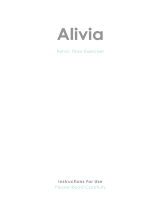 TensCare ALIVIA Manuel utilisateur
TensCare ALIVIA Manuel utilisateur
-
 TensCare UNICARE Manuel utilisateur
TensCare UNICARE Manuel utilisateur
-
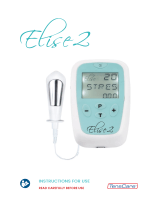 TensCare ELISE 2 Manuel utilisateur
TensCare ELISE 2 Manuel utilisateur
-
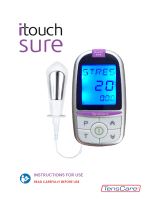 TensCare ITOUCH SURE Manuel utilisateur
TensCare ITOUCH SURE Manuel utilisateur
-
TensCare TENS One Mode d'emploi
-
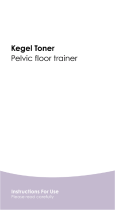 TensCare KEGEL TONER Manuel utilisateur
TensCare KEGEL TONER Manuel utilisateur
-
TensCare X-PR13 Mode d'emploi
-
TensCare I-CM50100PM Manuel utilisateur
-
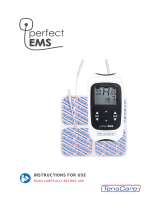 TensCare Perfect EMS Manuel utilisateur
TensCare Perfect EMS Manuel utilisateur
-
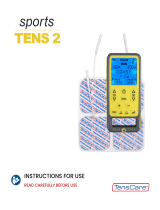 TensCare Sports TENS 2 Manuel utilisateur
TensCare Sports TENS 2 Manuel utilisateur
Autres documents
-
Beurer EM 50 Manuel utilisateur
-
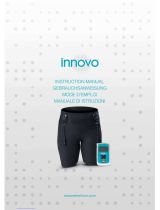 Restore The Floor Innovo Manuel utilisateur
Restore The Floor Innovo Manuel utilisateur
-
Beurer EM 59 Manuel utilisateur
-
Enraf-Nonius VAGINAL EMG SONDE Manuel utilisateur
-
Enraf-Nonius ANALE EMG SONDE Manuel utilisateur
-
Enraf-Nonius NN ELEKTR. T.B.V. 3444.652 Manuel utilisateur
-
Enraf-Nonius Myomed 134 Manuel utilisateur
-
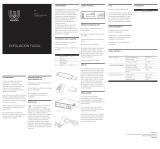 Weelko B-Equipment F311A Le manuel du propriétaire
Weelko B-Equipment F311A Le manuel du propriétaire
-
PawHut D31-012BU Assembly Instructions
-
Medline MDS6301600 Series Ring Pessary Manuel utilisateur




















































































































































